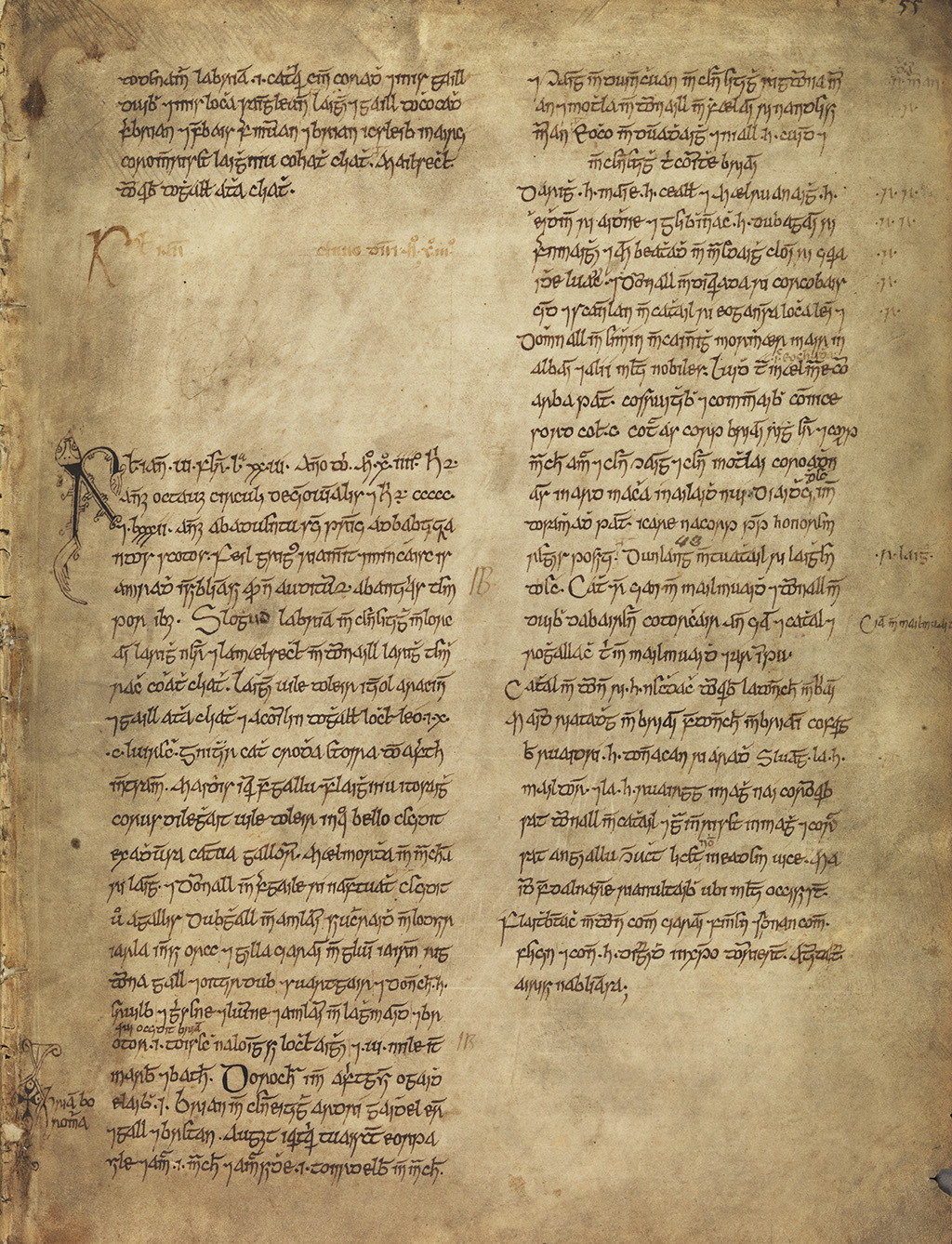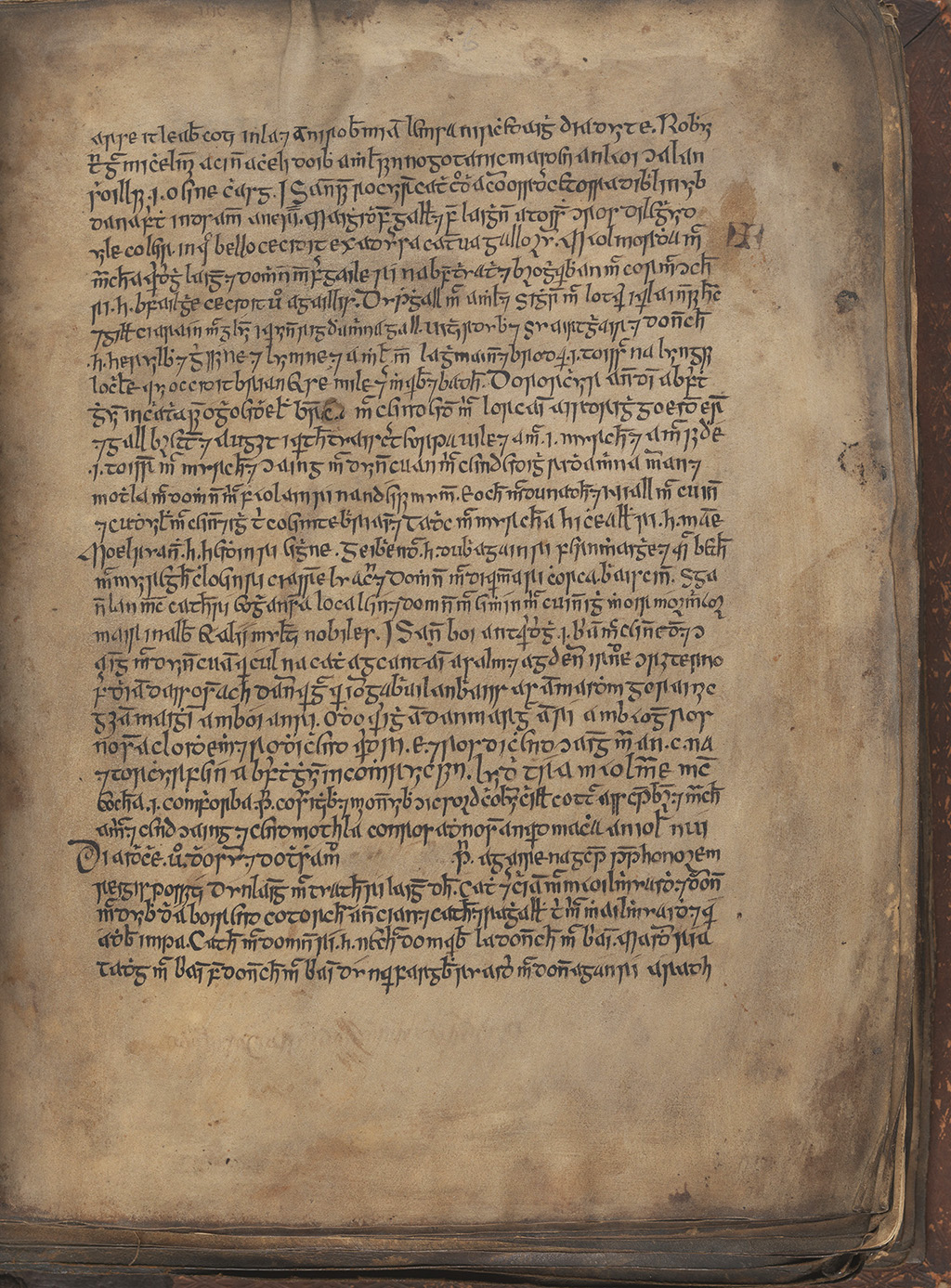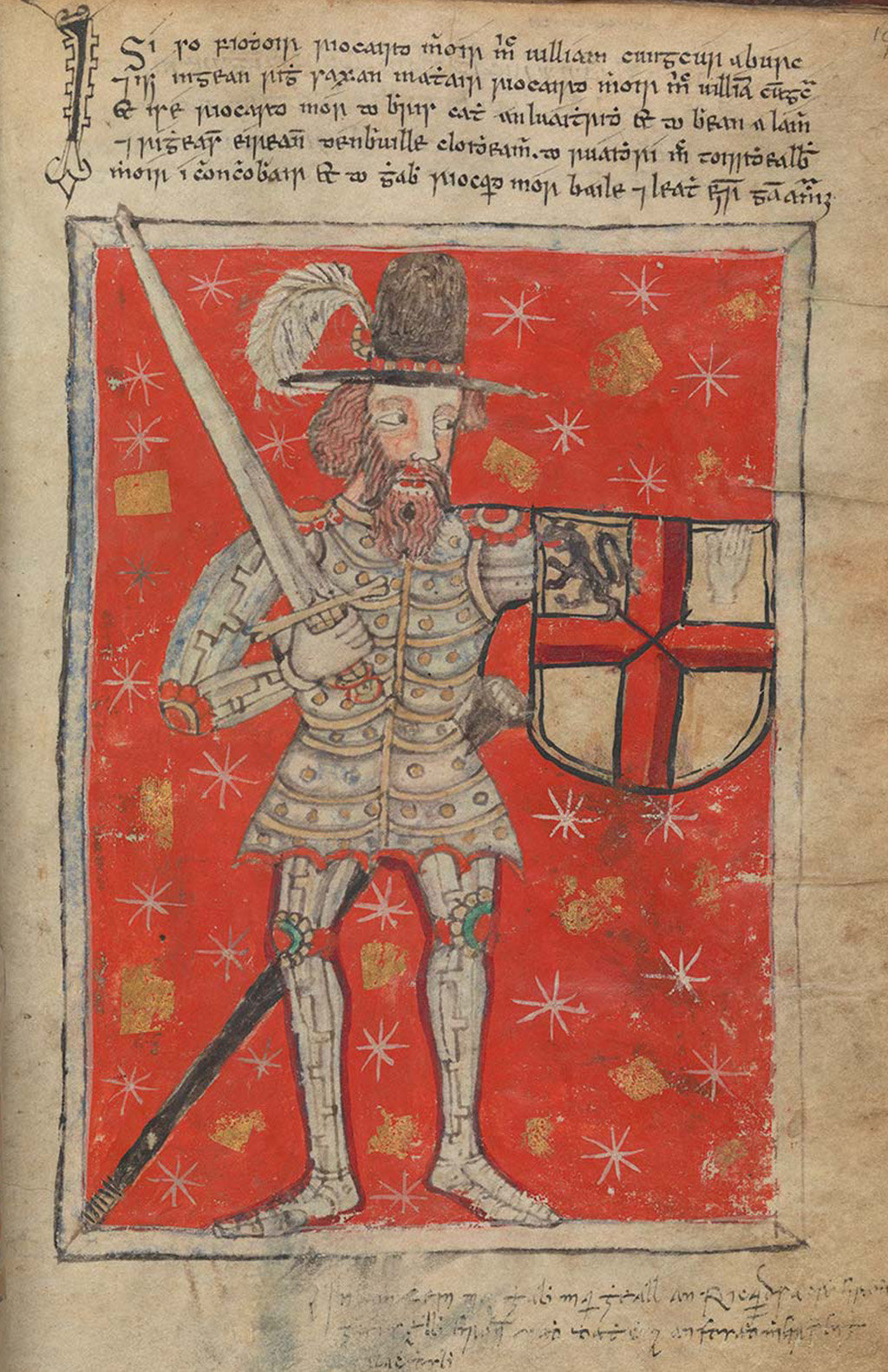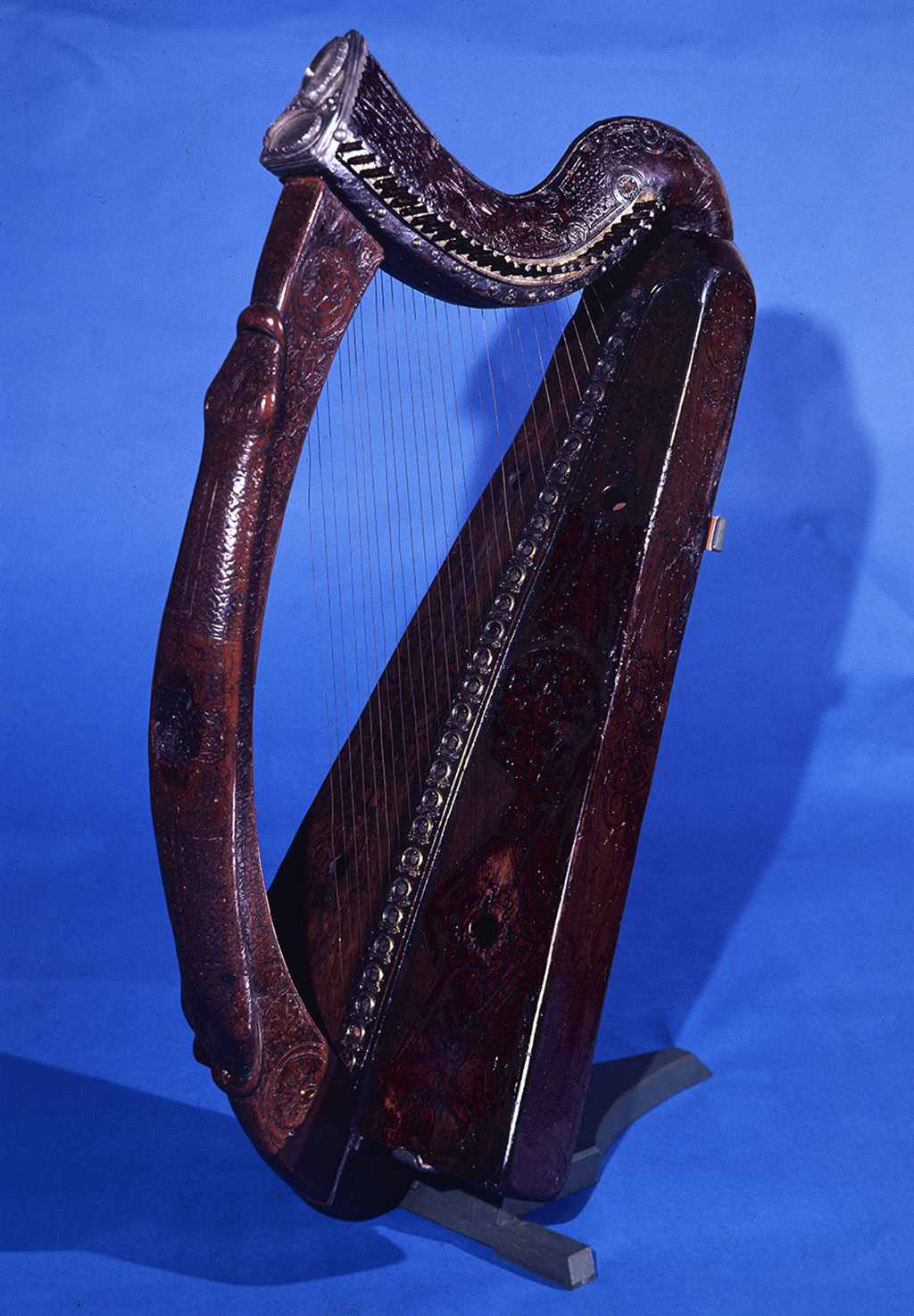Brian's Funeral and Legacy
Brian’s army had won the battle, but his enemy King Sitriuc remained in control of Dublin. Many of the dead were probably buried on the field of battle, but the fallen leaders were afforded special treatment.
Brian’s body, along with that of his son Murchad, and the heads of his nephew and another Munster king, were all taken to Swords (north Co Dublin). There they were met by the Abbot of Armagh, who escorted the cortege northward to Armagh, where their remains were buried with great reverence after an extended wake. It was fitting that the church of Armagh should accord this special honour to the man they had once hailed as ‘Emperor of the Irish’.
Annals of Ulster
16th century
TCD MS 1282 f 55r
The Annals of Ulster is one of the most important historical sources for Brian’s career. The elaborate ‘K’ (denoting the beginning of the year), marks the events of 1014, dominated by the Battle of Clontarf. The decorated cross next to Brian’s name (Brian Boromha) in the bottom-left margin further highlights the battle’s significance.
Annals of Loch Cé
1580s
TCD MS 1293 f 6r
Although the Annals of Loch Cé (Lough Key, Co Roscommon) are closely related to the Annals of Ulster, their account of the Battle of Clontarf (1014) is much more colourful. It describes a number of ominous supernatural apparitions that supposedly occurred the night before the battle. These include a vision of St Senán of Scattery Island (in whose church Brian had killed the Viking king of Limerick), and a visit of a bean sí (fairy woman), who predicted Brian’s death.
The cross on folio 6r marks the beginning of a list of those who died in battle, starting with Brian’s former brother-in-law, Máel Mórda king of Leinster.
Book of the de Burgos
1570s
TCD MS 1440 f 19r
The Burke family of Co Mayo commissioned this manuscript during the late 16th century. The Burkes/de Burgos were among the most successful of all the early English settlers in Ireland and Ricard Mór de Burgo (died 1243), was an ancestor of the Mayo Burkes. He is believed to have been a descendant of Brian Boru, as his mother was probably a daughter of Domnall Mór Ua Briain (great-great-great grandson of Brian).





